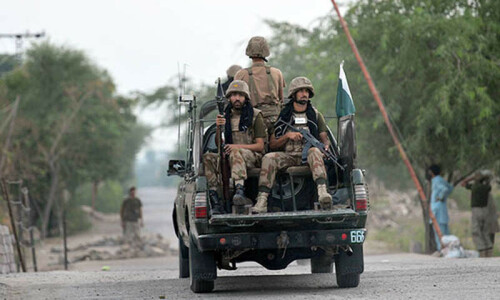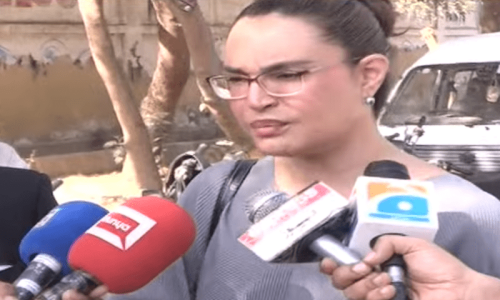The last of the provinces to announce its budget, Balochistan revealed a Rs956 billion surplus budget last week. The budget may aim to address persistent socio-economic issues while setting the stage for sustainable development in one of the country’s most resource-rich yet neglected areas. However, the challenges it faces are substantially bigger than those of other provinces.
Literacy crisis
At Rs126bn for education, Balochistan is allocating 13pc of its budget to address various concerns at different levels of studies. This is up from Rs88.5bn last year which was about 12pc of its budget in FY24.
According to the Pakistan Economic Survey released earlier this month, Balochistan has the lowest literacy rate in the country at 54.5 per cent. Gross enrollment rates for girls in matric are a staggering low level of 21pc — eight out of 10 girls in Balochistan are not enrolled at matric levels.
For something as basic as access to electricity, Balochistan’s numbers are dismal. Only 15pc of Balochistan’s primary schools have electricity which means there are many children younger than 10 that spend their school day in the sweltering heat. Water is one of life’s essentials but the province has only 33pc access at the primary levels.
From dire education statistics to a crumbling healthcare system, Balochistan faces an uphill battle
Cultural impediments aside, Balochistan Finance Minister Mir Shoaib Ahmen Nosherwani said in his budget that nearly 10,000 posts from Grades nine to 15 were vacant.
There are roughly 13,000 government schools in Balochistan, as per the province’s education information system. Thus, it would appear that most schools have at least one vacancy, assuming that the schools exist given that media reports indicate there are thousands of ghost schools and colleges in the province.
Healthcare’s uphill battle
Obtaining reliable health data for Balochistan is a challenge in itself, highlighting the very obstacles the province faces in delivering proper healthcare. However, media reports paint a grim picture, suggesting a staggering doctor-to-patient ratio of 1:1,000 and a nurse-to-patient ratio of 1:50.
This severe shortage of medical personnel leaves countless residents struggling to access even basic medical services, especially since roughly 70pc of its population is in rural areas.
Compounding these issues is the widespread malnutrition plaguing Balochistan’s children. An Agha Khan University report reveals that nearly four out of 10 children in the province are underweight.
Poverty and natural disasters create a vicious cycle: limited access to nutritious food due to economic hardship is exacerbated by natural disasters that disrupt agricultural production and distribution channels. This unfortunate reality makes Balochistan, the poorest province in the country, also the one with the highest rates of malnutrition.
Despite these daunting challenges, there seems to be an acknowledgement of the gravity of the situation. Mr Nosherwani announced a significant increase in healthcare spending. The allocated budget of Rs67.bn represents a 30pc hike compared to the previous fiscal year. Whether this increase will be enough to address the immense needs of Balochistan’s healthcare system remains to be seen.
Pointless vacancies
In line with the federal budget as well as the other provinces, Balochistan has announced a big jump in salaries from 22pc to 25pc, depending on the grade. The budget also allocates Rs13bn for pensions and other benefits and aims to create 3,000 new job opportunities. While creating job opportunities is dandy, the posts need to be filled.
However, a significant number of government positions have remained unfilled, creating a sense of frustration and resentment among a generation burdened by high unemployment rates.
The situation has only worsened recently, with the number of vacant government posts continuing to rise. This lack of job creation in the public sector starkly contrasts the desperate need for employment opportunities for Balochistan’s young population.
From floods to droughts
As recently as April this year, an urban flooding emergency was declared in Balochistan. In the 2022 floods, over 300 people died, about 500,000 houses were damaged, and 149 bridges were destroyed.
Acknowledging the severity of the threat, Mr Nosherwani said in his speech that the government had taken climate change seriously and was evolving plans to mitigate its impact. He said Rs10bn had been allocated under the Green Balochistan Initiative, and the grant for the Disaster Management Authority has been increased to Rs7.9bn.
Published in Dawn, The Business and Finance Weekly, June 24th, 2024















































